MTG Commander explained: Rules, banned cards & more
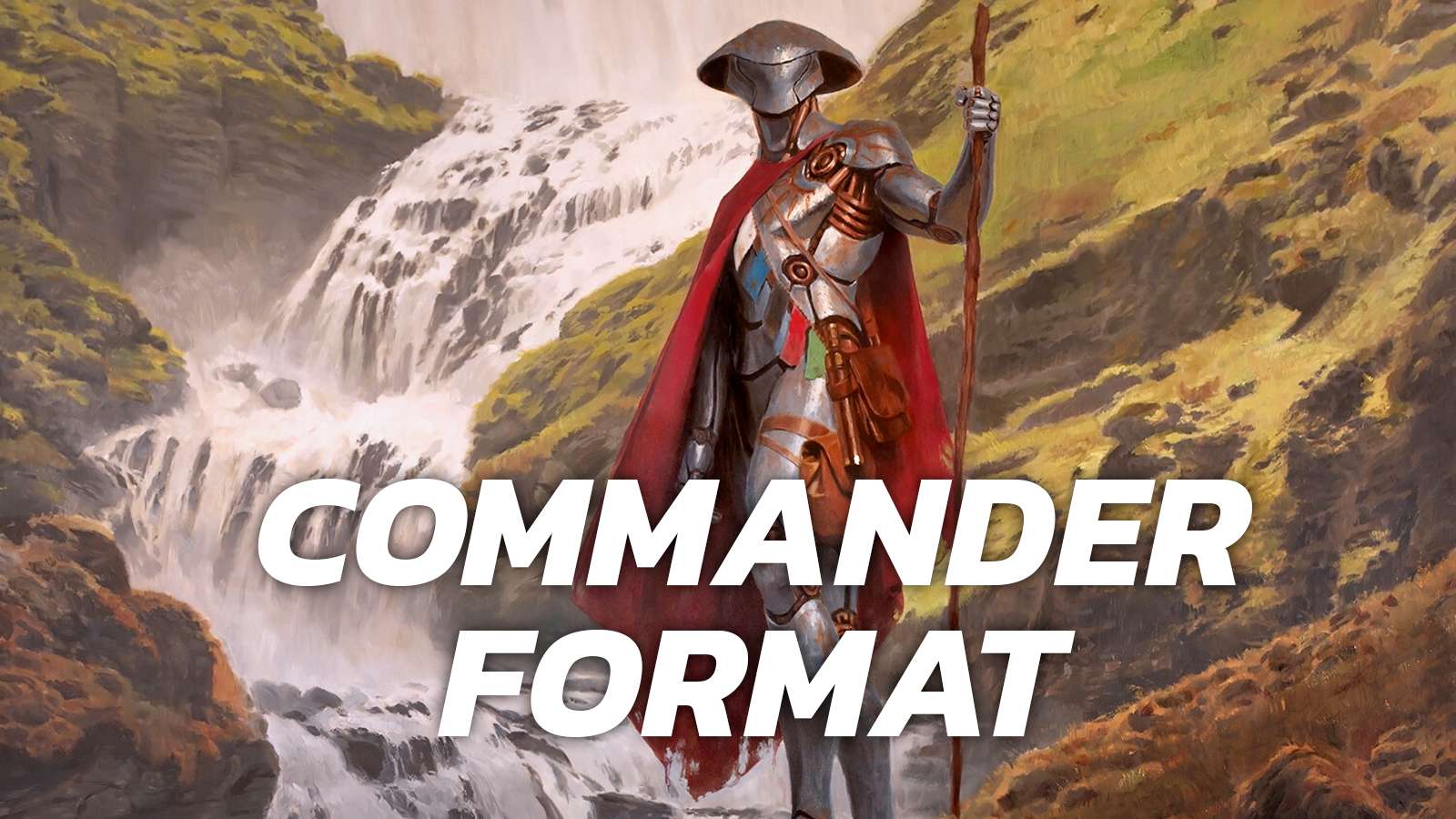
Magic: The Gathering’s most popular format, Commander, is a little different from the regular formats in the game. Let’s break it all down for you.
Commander is Magic’s current most popular format. It’s so popular, it’s actually become one of the company’s newest focuses with entire sets dedicated to it, and a fresh set of decks with each new set.
However, it differs from the rest of Magic and has inspired its own spin-offs with Brawl and Oathbreaker and the niche Canadian Highlander.
When did Commander start?
Commander’s history starts in the late 1990s when creator Adam Staley created the game for his Alaskan group. Originally dubbed Elder Dragon Highlander, it revolved around using one of the five legendary dragons as your ‘general’, or ‘commander’, to lead a 99-card singleton deck. This eventually changed to include any legendary creature.
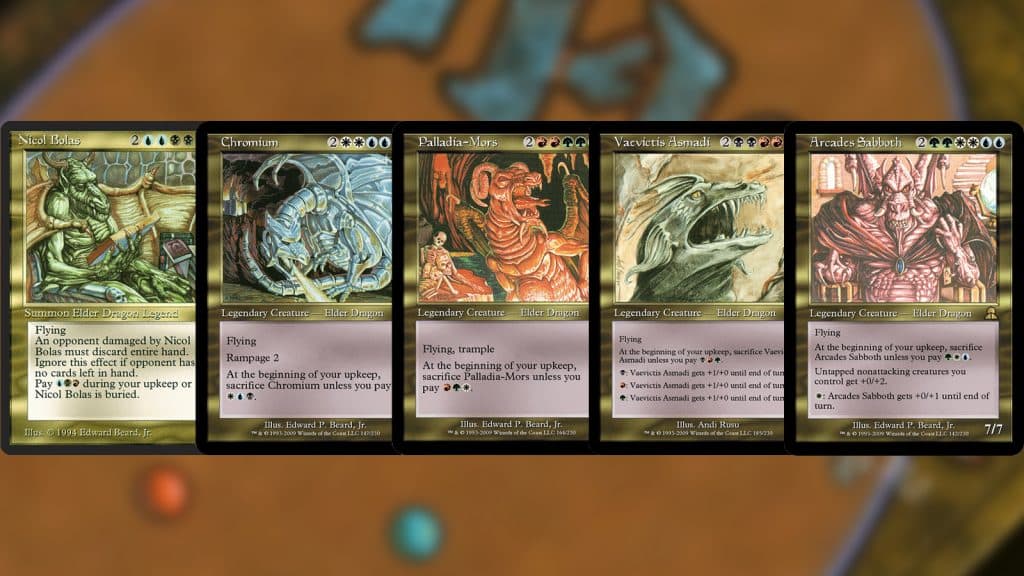
It eventually found its way to Sheldon Menery, who wrote an article for the popular trading card site and store, Star City Games. Eventually, Wizards of the Coast themselves found it being advocated for internally, and Commander, as it is known today, was born, with the first official products launching in 2011.
Who manages the format?
The game is managed externally. Wizards only provide cards and products for the game. The Commander Rules Committee manages the game and is led by Sheldon Menery.
Commander deck-building rules
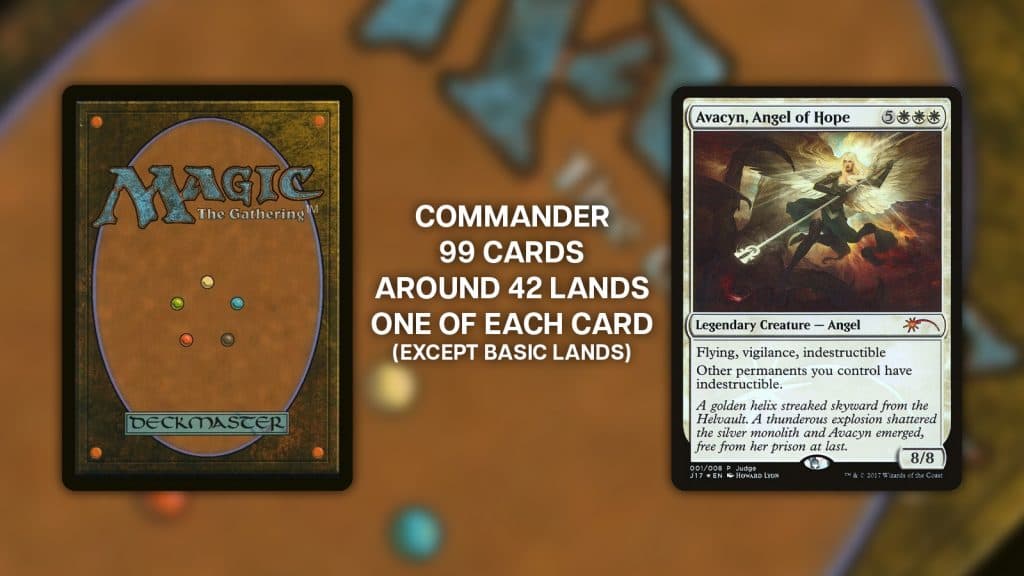
Commander is different amongst Magic formats, as it only allows for one card of each type, except for basic lands. You also have to build around the colors of your chosen Commander. However, if a card states you can have as many in your deck as you like, you can have multiple of those cards.
Which cards can be your Commander?
You can choose almost any Legendary creature to be your Commander. Exceptions include cards that are banned from the game. You can also choose particular Planeswalkers, and some cards feature an ability, Partner, allowing for two Commander cards at once
What is color identity in MTG?

Color identity is determined by the represented mana on your chosen Commander. For instance, if you have Sliver Queen, which is all five colors, you’re allowed to use all five colors. If you have a card that costs only blue, you can only have blue or colorless spells in your deck.
This also counts mana symbols that might be a different color than the casting cost but are used in abilities. If you have a card that costs only white mana but has a red costing ability, you can include red in your deck.
Can any Commander deck have artifacts in it?
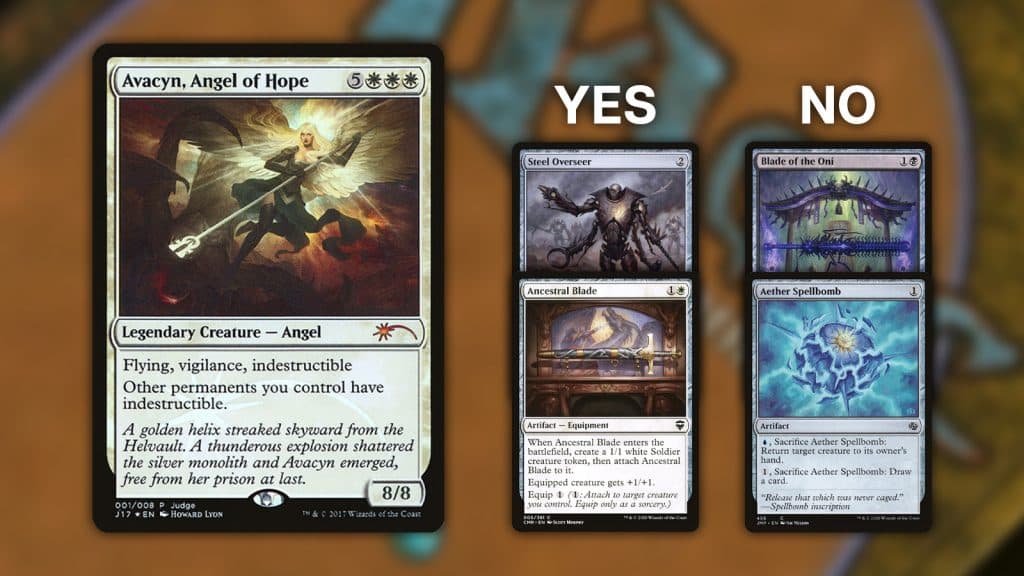
Yes, as long as the artifact is colorless or matches the color identity, you can include it in your deck. It must also not have an activated ability that costs a different color than your Commander.
Can Devoid cards be used in a Commander deck?

You can use a card with devoid on it if the mana cost matches the Commander’s color identity. Even though the rule for Devoid counts it as ‘colorless’, the color identity is still present. Adverse Conditions, for instance, couldn’t be included in a mono-black deck.
Singleton deck building
As explained above, you can only have one of each card type in your deck, except for basic lands. It’s recommended you have at most 42 lands, with a mixture of basic and non. We recommend not going below 30, or risk not having the resources needed.
Again, the color identity rule is in play here. You can’t include a dual land that taps for another color outside of your Commander’s identity.
Outside of this, you’re pretty much free to build how you see fit. Whether it’s focusing on the Commander itself, or utilizing your general to fuel the engine you’ve built in your deck. The Commander might not even really factor into your chosen 99 cards, and instead, just give you access to colors you want to play in.
Commander staple cards: Sol Ring & more
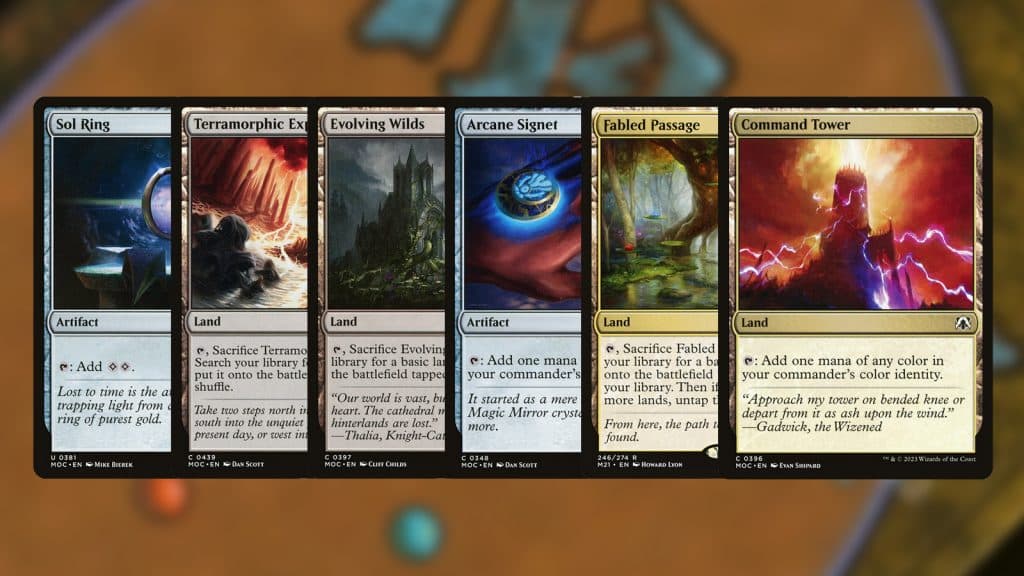
Commander is a casual format, but there are some staples you’re going to want to acquire if you end up falling into the giant rabbit hole.
Staple cards are often found in almost every deck and can be a huge boon to your plans. Of course, this list is partially based on data, but also on our own experiences.
- Sol Ring – Cost: 1 colorless, tap for 2 colorless mana
- If you manage to draw this in the early game, you’ll be able to start putting down cards super quickly
- Arcane Signet – Cost: 2 colorless, tap to add mana matching your Commander’s color identity
- A cheap, easy ‘mana rock’ to get out and use to fuel your machinations
- Evolving Wilds
- Sacrifice it and go hunting for a basic land card to help you out. The land card comes in tapped
- Terramorphic Expanse
- Same as Evolving Wilds, and a cool way to get around the one-card-only rule
- Fabled Passage
- Like Evolving Wilds, but allows the land to not come in tapped if you control four or more lands
- Command Tower
- Add one mana of any color in your commander’s color identity
What is the Command Zone?
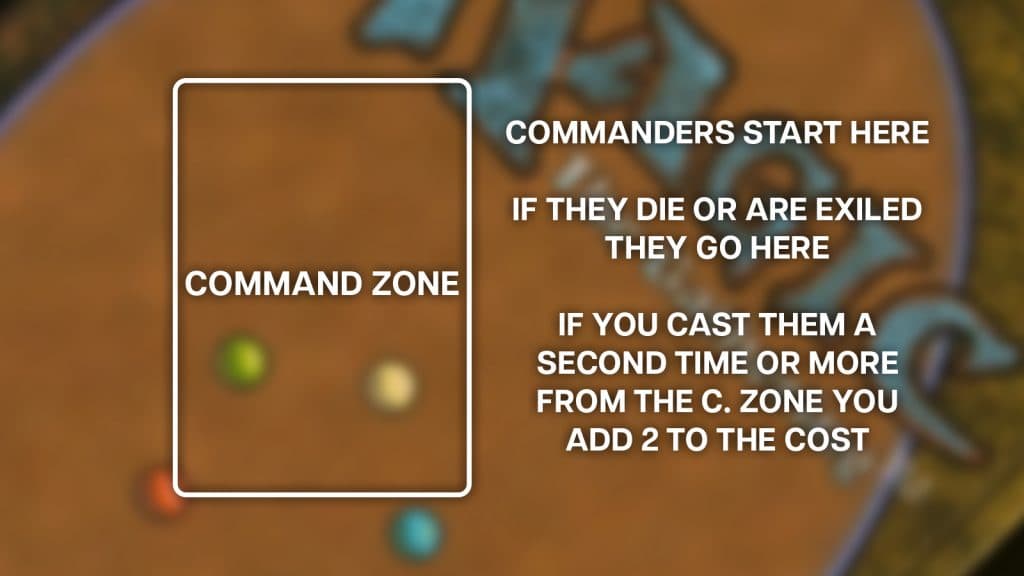
The Command Zone is exclusive to the format and is where your chosen Commander will start the game from. They can be cast as if they were in your hand from here and can be returned to the Command Zone if they were to die.
Each time the Commander returns to the graveyard, you need to pay the Commander Tax to cast it again. For each time it is sent back either through death or other means, it costs an additional 2 colorless mana to cast them.
Can Commanders go to the graveyard or exile?
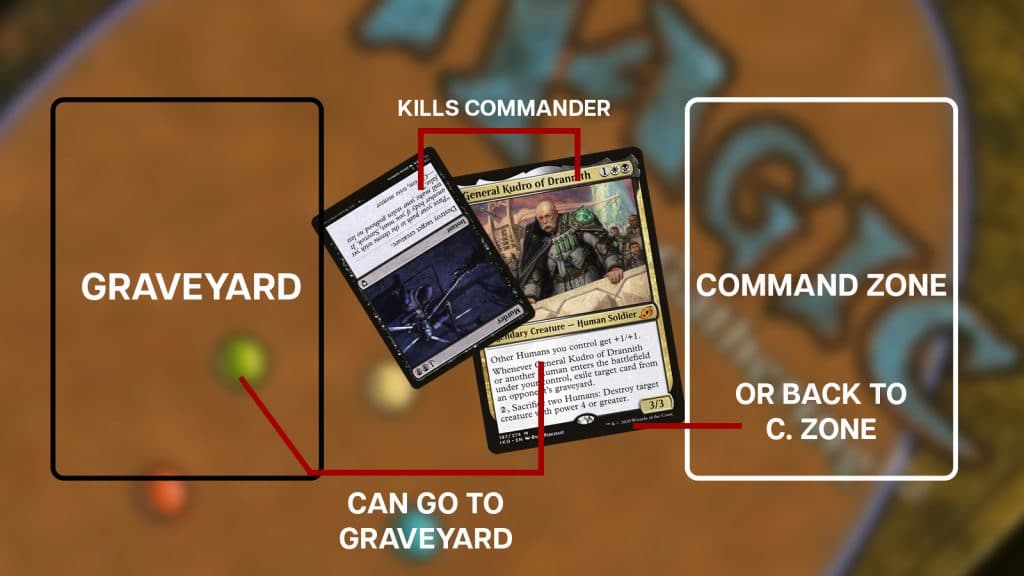
Yes, if you’re running a deck that uses the graveyard or you don’t want to pay the Commander Tax, you can pop the creature into the graveyard until you’re ready to exhume it. This counts for exile too, but if you exile a card, it’ll be stuck there.
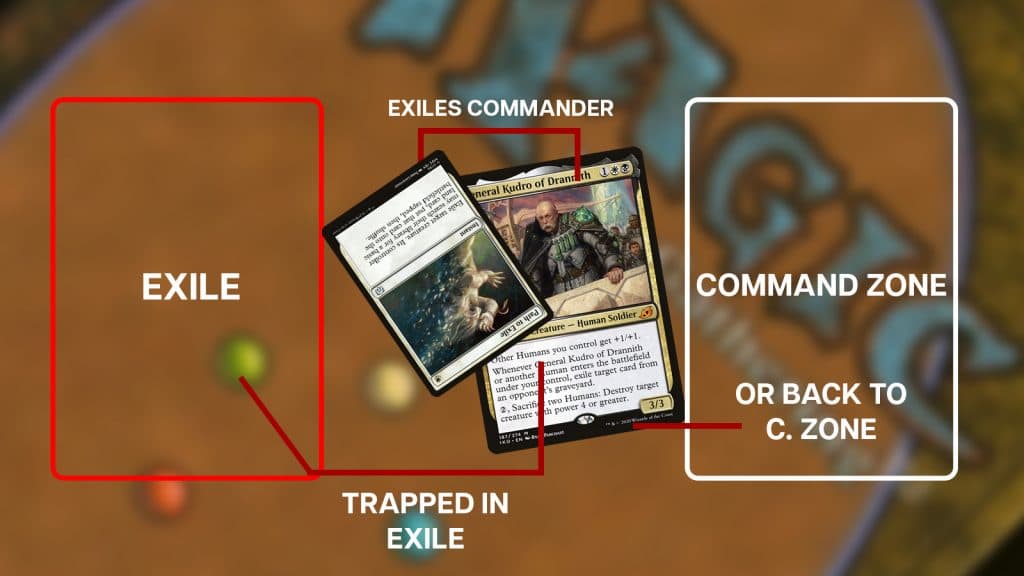
How does Commander damage work?
This is a rule meant to be an alternative win condition to the usual methods. If your Commander over the course of the game is able to deal 21 damage, it’ll knock your opponent out of the game.
It doesn’t count any additional damage dealt by abilities, however. So if a card deals 20 damage, but then adds an additional 1 damage thanks to an ability after the fact, this doesn’t count. If it has an ability that causes other players to lose life or other damage that isn’t combat damage, this doesn’t count either.
However, as Commander is a casual format, this rule can be ignored if the group decides to.
How much life do you start with in Commander?
As the format is designed around big plays, players start with 40 life instead of the usual 20.
Where to start with Commander
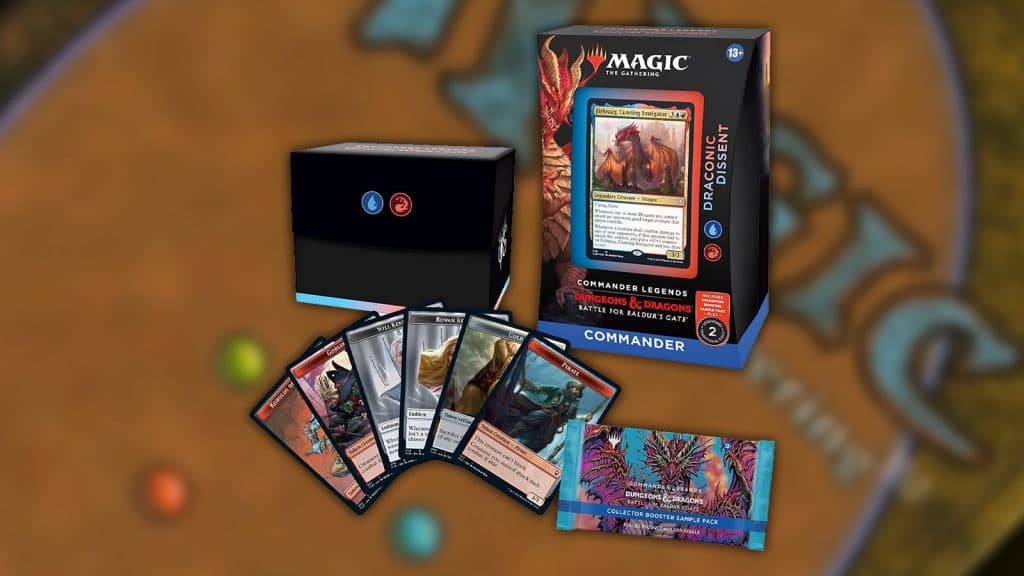
As the format includes almost the entirety of Magic, it can be hard to choose where to start. Right now, the easiest place to start playing Commander is to pick up a preconstructed deck from Wizards.
These aren’t always the best of the best, as we’ve seen with the recent controversy surrounding Commander Masters’ Sliver Swarm deck. However, they’re a great starting point and can be easily upgraded with missing pieces.
We also recommend getting in touch with your local game store to see if they have a dedicated night, or just regulars hosting games. Remember, it’s a casual format and a lot of players will be more than willing to help you out.
What is cEDH?: Competitive Commander
cEDH is Commander’s high-tier competitive side that features decks made specifically to ensure a win. There’s no fat in these decks, and they often can be much more expensive than their other counterparts. Wizards, nor many stores, acknowledge this officially and you’d have to find a group within the online communities to start getting into it.
What cards are banned in Commander?
As detailed by the Commander Rules Committee, these are the banned cards in the format:
- Any card using the keyword Ante
- Any card permanently removed from the game by Wizards
- Any cards with the Conspiracy card type
- Ancestral Recall
- Balance
- Biorhythm
- Black Lotus
- Braids, Cabal Minion
- Channel
- Chaos Orb
- Coalition Victory
- Emrakul, the Aeons Torn
- Erayo, Soratami Ascendant
- Falling Star
- Fastbond
- Flash
- Gifts Ungiven
- Golos, Tireless Pilgrim
- Griselbrand
- Hullbreacher
- Iona, Shield of Emeria
- Karakas
- Leovold, Emissary of Trest
- Library of Alexandria
- Limited Resources
- Lutri, the Spellchaser
- Mox Emerald
- Mox Jet
- Mox Pearl
- Mox Ruby
- Mox Sapphire
- Panoptic Mirror
- Paradox Engine
- Primeval Titan
- Prophet of Kruphix
- Recurring Nightmare
- Rofellos, Llanowar Emissary
- Shahrazad
- Sway of the Stars
- Sundering Titan
- Sylvan Primordial
- Time Vault
- Time Walk
- Tinker
- Tolarian Academy
- Trade Secrets
- Upheaval
- Yawgmoth’s Bargain